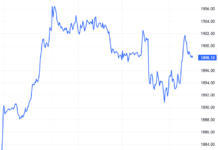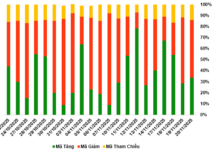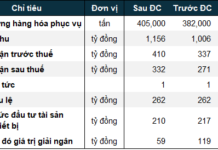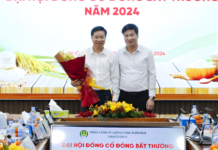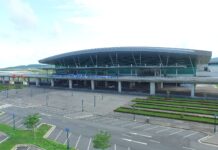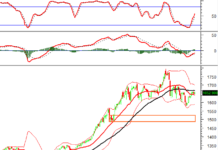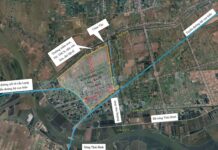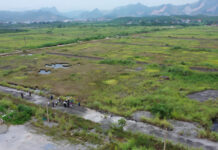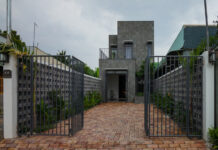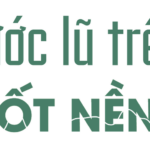On November 19th, at the seminar titled “The Journey to Realizing Vietnam’s TOD Urban Model: Opportunities and Challenges,” organized by DKRA Group under the guidance of the Vietnam Real Estate Association (VNREA) and with media sponsorship from Vietnam Television Center in Ho Chi Minh City, numerous experts emphasized the urgent need to implement the Transit-Oriented Development (TOD) urban model.
Dr. Nguyen Van Dinh, Vice Chairman of VNREA, stated that Ho Chi Minh City is entering a phase of robust restructuring, particularly in urban planning and spatial governance.
TOD is considered the “backbone” of the new urban strategy, aiming to address traffic congestion, expand urban spaces, and enhance long-term quality of life.
According to Dr. Dinh, as the city expands, the demand for living near public transport hubs will create new development poles, laying the foundation for Ho Chi Minh City to become a true megacity.
Sharing the same view, Vo Huynh Tuan Kiet, Director of the Residential Project Marketing Department at CBRE Vietnam, noted that post-merger, Ho Chi Minh City will form satellite cities and move towards a “TOD revolution.” Once the Metro infrastructure is complete, residents will gradually accept living further from the city center, prioritizing projects with clear legal status, full amenities, and rental potential.
In reality, property prices around Metro Line 1 have increased by 50% to 200% during the pre- and post-operation phases—a trend consistent with many countries globally. However, Mr. Kiet cautioned that for TOD to be effective, public transport must be synchronized between residential areas and stations to reduce private vehicle traffic.

Property prices around Metro Line 1 surge by up to 200%
From an urban planning perspective, Dr. Ngo Viet Nam Son emphasized that TOD is not only important but also “crucial” for Ho Chi Minh City. He pointed out that Vietnam has only been approaching this model for about 3 years, while the world has been ahead by decades. Therefore, building a TOD ecosystem must ensure convenience for all, encourage walking habits, and integrate planning from the outset.
Additionally, the city needs to promote public-private partnerships, strengthen the legal framework to leverage land funds for budgeting, and integrate smart technology in Metro operations and urban management.
According to Dr. Son, a true TOD living environment should encourage residents to walk more and foster a sense of community tied to public transport lines.
The seminar also noted that Ho Chi Minh City currently has only one Metro line and no fully developed TOD urban areas. Thus, TOD is expected to become a core factor shaping the housing market over the next 10-20 years.
A representative from the Ho Chi Minh City Department of Planning and Architecture announced that the city will implement TOD in phases. In the first 5 years, Ho Chi Minh City will pilot 11 TOD locations with a scale of 1,700–1,800 hectares along Metro Lines 1, 2, and Ring Road 3. Specifically, the old Di An area will have a 420-hectare TOD cluster with an investment of nearly VND 1 trillion.
By 2035, Ho Chi Minh City aims to develop a 355 km-long Metro network and mobilize approximately USD 7.8 billion from TOD land funds to reinvest in public transport infrastructure. This strategic move is expected to alleviate congestion, improve living standards, and promote sustainable urban development in the coming decades.
“Small Rear House Suddenly ‘Upgraded’, No Longer Criticized for Poor Feng Shui”
Once dismissed for poor feng shui and perceived difficulty in selling, back-tapering houses are now in high demand due to their prices being 15-30% lower than those of square plots in the same area.
Prime Real Estate Alert: Three Premium Land Plots Up for Auction in Thu Thiem
The city is gearing up for the highly anticipated auction of three prime land plots in the prestigious Thu Thiem New Urban Area this December.
Which Real Estate Sector Saw the Biggest Price Surge in the Last Decade?
From 2015 to 2025, central Ho Chi Minh City’s real estate prices surged across all segments, though growth rates varied significantly. Land plots led the charge with a staggering 384% increase (from VND 25 million to VND 121 million per square meter), followed by apartments at 197% (VND 31 million to VND 92 million), private houses at 168% (VND 56 million to VND 150 million), and storefront properties at 134% (VND 92 million to VND 215 million).

